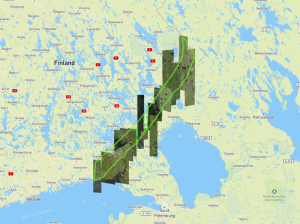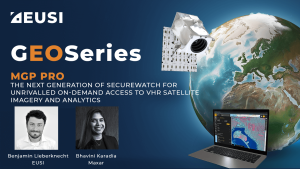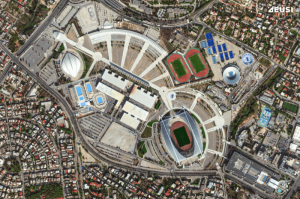European Space Imaging Wins Additional Supply Contract to European Commission
- European Space Imaging
- 16 December, 2015
The Munich-based company has been awarded another major supply contract for VHR satellite data and services to support checks within the EU Common Agricultural Policy (CAP).
European Space Imaging announced today that the company has signed an additional multi-year framework supply contract with the European Commission for the provision of very high-resolution (VHR) satellite data and associated services in support of the European Union’s Common Agricultural Policy (CAP).
This second framework agreement between the European Commission’s Joint Research Centre (JRC) and European Space Imaging (EUSI) covers imagery from the most advanced fleet of VHR satellites and grants the JRC and the EU Member States access to imagery of the highest spatial and spectral resolution currently commercially available. The contract has an estimated total value of 10.5 million EUR over a period of up to 4 years and will be carried out by European Space Imaging and its technology partner GAF AG with the support of the German Aerospace Center (DLR) and in close cooperation with DigitalGlobe.
European Space Imaging will be responsible for providing satellite imagery and associated services directly to the European Union Member States for the Control with Remote Sensing (CwRS) and Land Parcel Identification System (LPIS) quality assessment of the CAP. EUSI will be managing all activities from satellite acquisition planning through to the final imagery delivery, including liaison with all stakeholders involved on EU and national level.
The company has been the most reliable data supplier to the European Commission in the Controls with Remote Sensing (CwRS) program and has delivered the bulk of the data for a yearly increasing number of control sites since the program’s inception in 2004. EUSI owns and operates a local satellite ground station for VHR satellites in Oberpfaffenhofen near Munich.
“We are pleased that the EU Member States are now able to do their work more accurately by making full use of the wealth of extra spectral information as well as the highest resolution VHR data currently available. We look forward to continuing our support to the EU CAP checks and other European programs into the future with quality customer care and data supply”, says Adrian Zevenbergen, Managing Director of European Space Imaging.
Related Stories

EUSI Monitors Baltics-Russian Border Amid Dangerous Conditions for Aerial Remote Sensing and GEOINT Data Collection
European Space Imaging (EUSI) is working closely with European intelligence agencies and key NATO MoDs to continuously monitor the volatile border along Estonia, Finland and Latvia. Between widespread GPS jamming, increased Russian air activity and military postering along these border regions, it has become unsafe for many commercial and government aircraft to collect vital data for both security and civil mapping projects.

MGP Pro Demonstration
Instant access to VHR satellite imagery via web or API. European Space Imaging recently recorded a webinar in which they demonstrated all the functionality of

EUSI Will Soon Offer Intraday Monitoring Across Europe After Maxar’s Second Successful Launch of WorldView Legion Satellites
With the successful launch of Maxar Intelligence’s second set of WorldView Legion satellites, European Space Imaging (EUSI) will soon offer up to eight daily collection opportunities in key latitudes across Europe and North Africa – a number that will increase after the final WorldView Legion satellites are launched and all six satellites are operational.

A Bird’s-Eye View: Olympic Stadiums of Europe from Space
The whole world is watching the Olympic Games in Paris with bated breath. But it’s not the first time the Summer Olympics have been held in Europe – 14 stadiums have been built across 10 countries, each of them unique and capturing the spirit of the cities that hosted them. Which one is your favourite?





